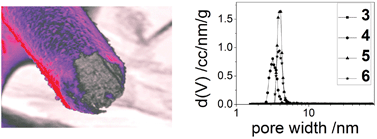Pseudomorphic transformation of amorphous silica microtubes into mesoporous MCM-41 type silica tubes. Synthesis, characterization and surface functionalization with titania, vanadia and zirconia
Abstract

* Corresponding authors
a
Fachbereich Chemie, Eduard-Zintl-Institut für Anorganische und Physikalische Chemie, Petersenstraße 18, Technische Universität Darmstadt, 64287 Darmstadt, Germany
E-mail:
joerg.schneider@ac.chemie.tu-darmstadt.de
Fax: +49-6151-163470
Tel: +49-6151-3225

 Please wait while we load your content...
Something went wrong. Try again?
Please wait while we load your content...
Something went wrong. Try again?
J. Patzsch and J. J. Schneider, Dalton Trans., 2013, 42, 1451 DOI: 10.1039/C2DT32298F
To request permission to reproduce material from this article, please go to the Copyright Clearance Center request page.
If you are an author contributing to an RSC publication, you do not need to request permission provided correct acknowledgement is given.
If you are the author of this article, you do not need to request permission to reproduce figures and diagrams provided correct acknowledgement is given. If you want to reproduce the whole article in a third-party publication (excluding your thesis/dissertation for which permission is not required) please go to the Copyright Clearance Center request page.
Read more about how to correctly acknowledge RSC content.
 Fetching data from CrossRef.
Fetching data from CrossRef.
This may take some time to load.
Loading related content
